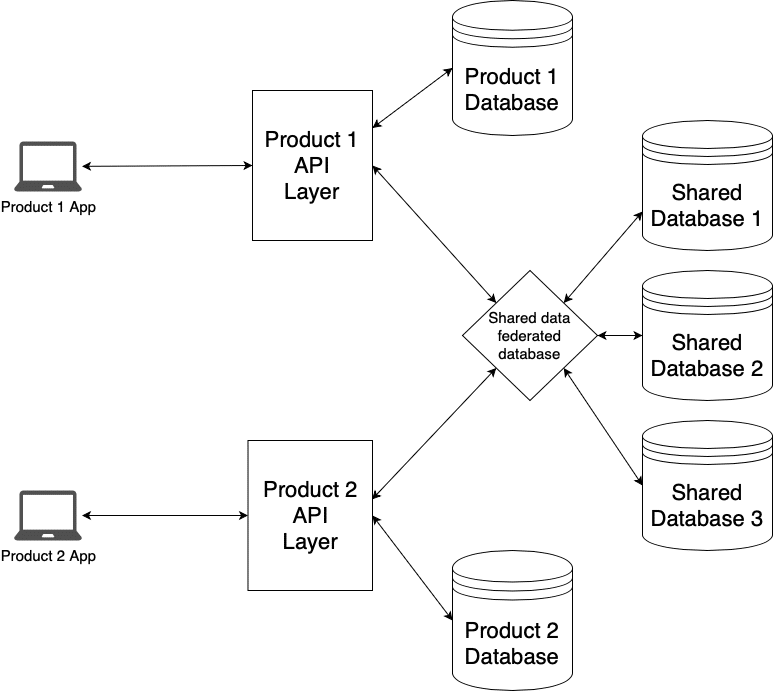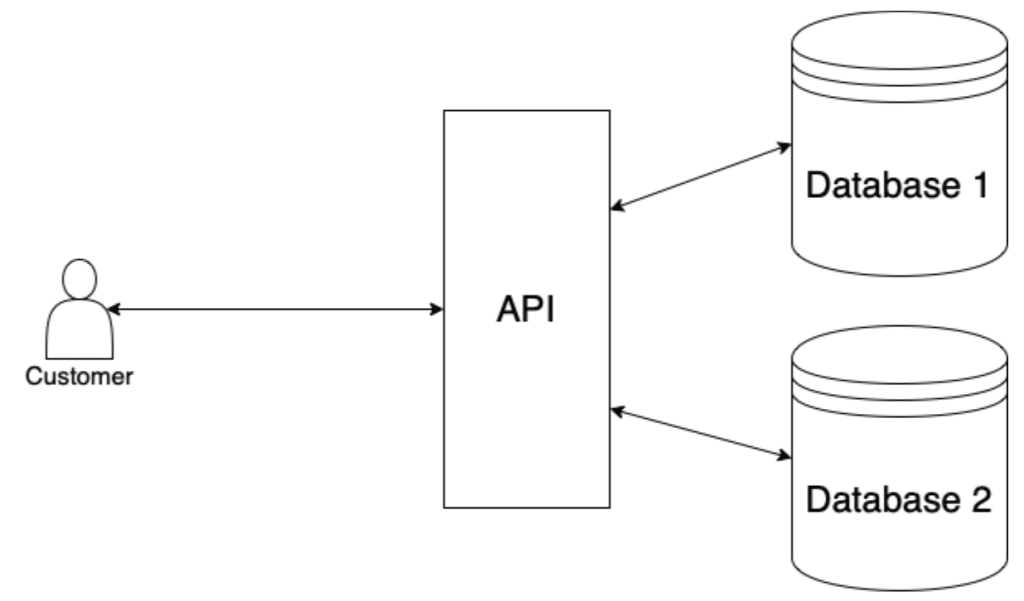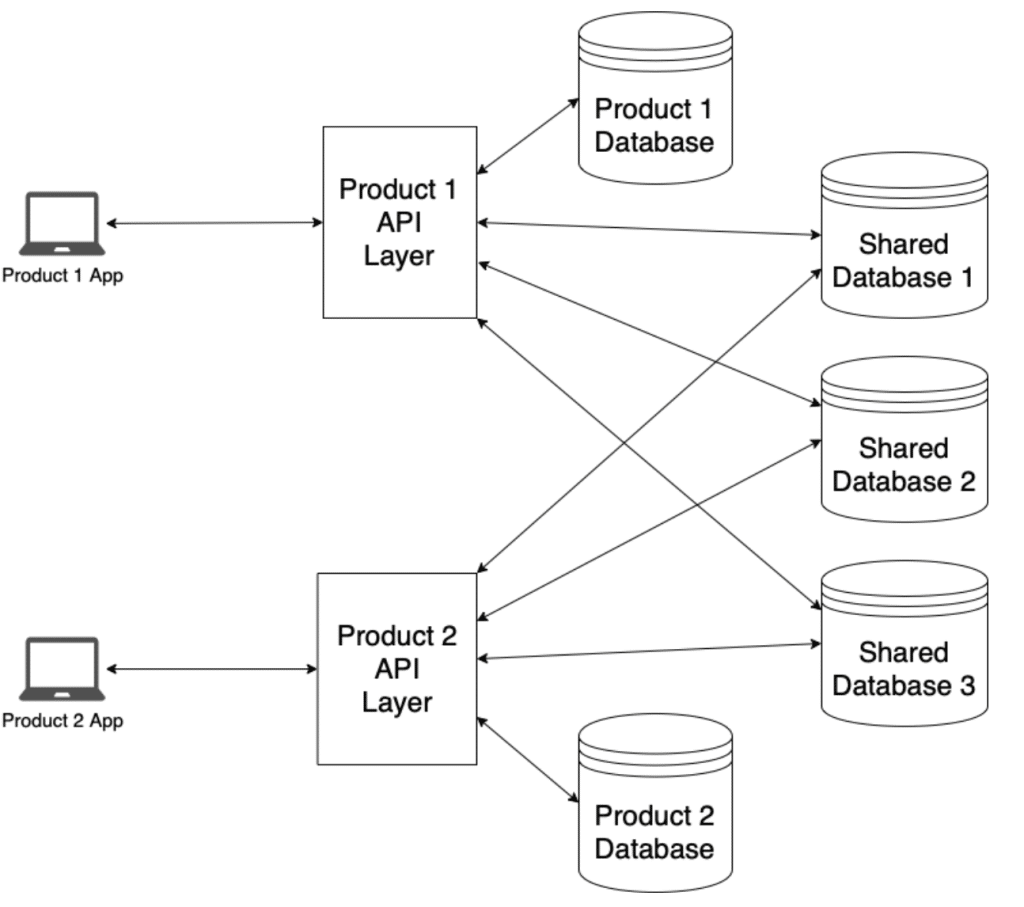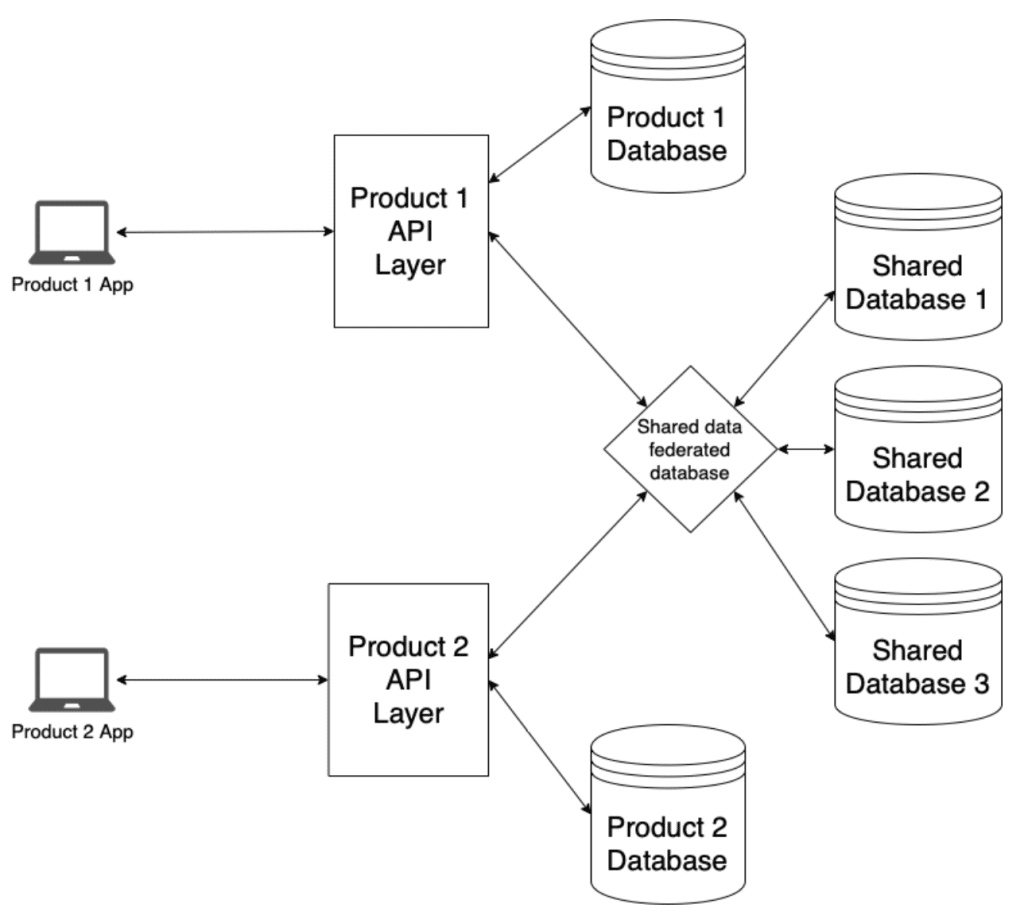Data Federation

Data Federation or a federated database system is essentially a facade, or unified layer, on top of multiple different database systems. The following are a few use cases where discussions of data federation will typically occur.
Your product is an API
In the diagram below, your product is an API, which uses two different databases. In this case, your API is functionally, for your customers, a federated database.
Your API interacts with 2 databases, it normalizes the data in those databases and provides a single interface to your customers. Your API (federated database) does not store any data – it is a facade that allows your customers to interact with data from N actual data storage systems using a single interface.

You have multiple products that use the same or similar data
In the diagram below, you have 2 products. Each product has a database that it uses, which is specific to the particular product. However, both products also use 3 other databases in common with each other.

You have multiple products that use the same or similar data – with data federation
In the diagram below, you have the same 2 products from above. Instead of the API layer for each of those products connecting directly to 4 different databases, it connects to 1 database specific to itself and a federated database, which provides a single interface to access all of your shared databases.
The federated database does not store any data – it is a facade that allows each of your product API layers to interact with shared data from N actual data storage systems using a single interface.

